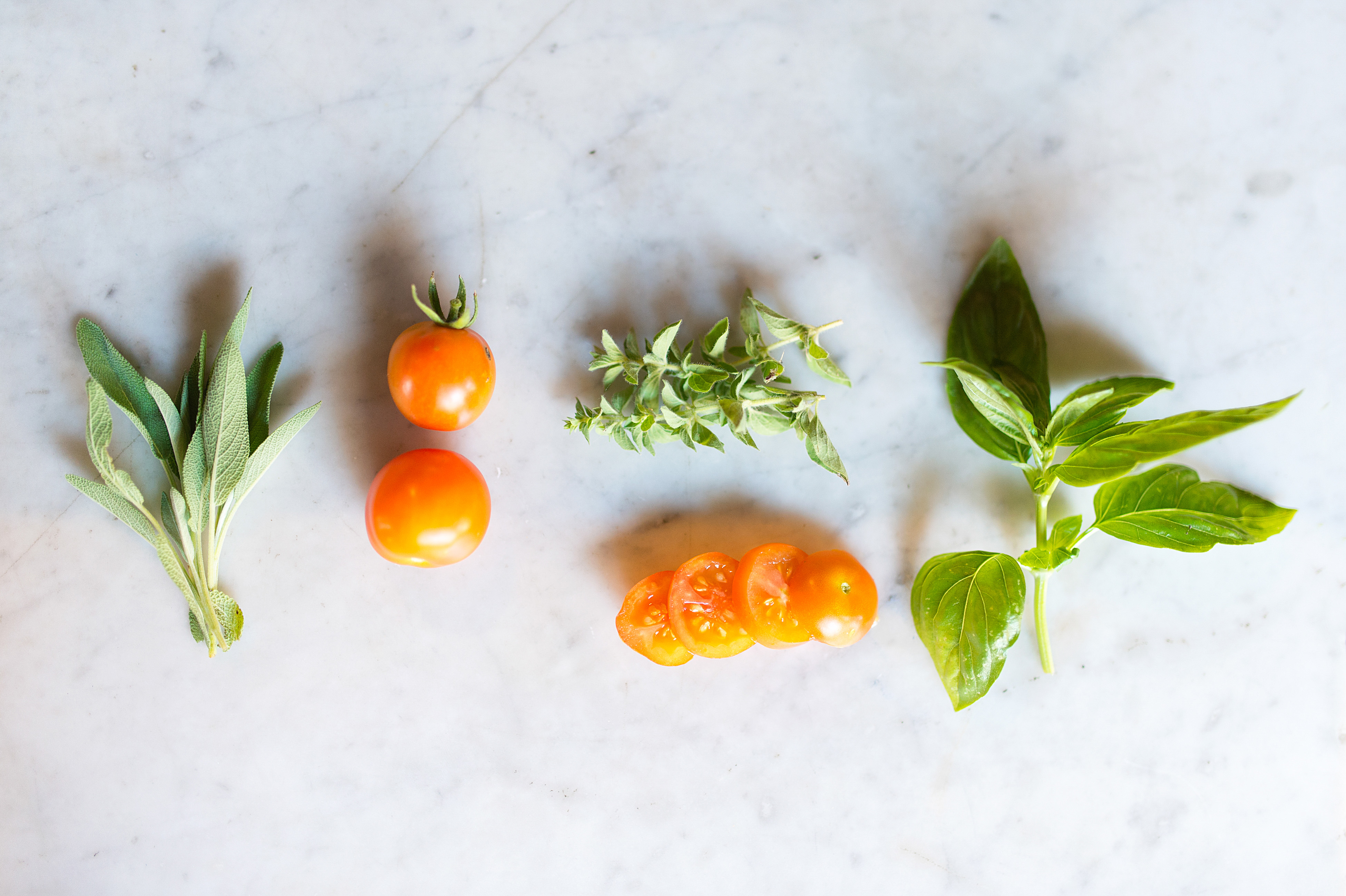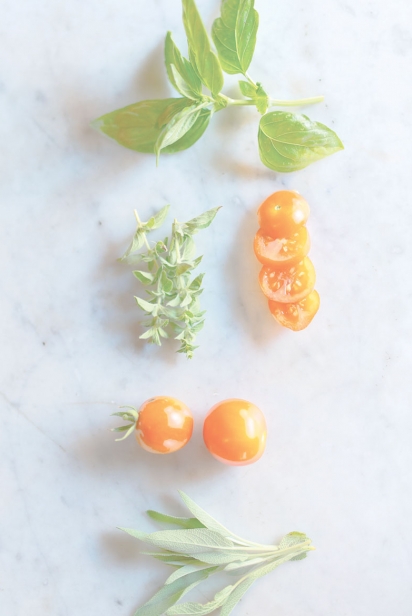Fall Foraging
As the summer garden is making its final descent and turning out the last of the heat-loving herbs and vegetables, preparations for the transition to fall gardening can already begin. At the onset of each new season of Oklahoma gardening, there’s a good window of time for planning the move from one season to the next. Gardening, like the weather, is categorized by four seasons—each one characterized by the edibles, colors and textures showcased every three months. Transitioning from summer to fall is the time to stock our pantries and freezers with things like sauces, pesto, herb purees, canned and pickled vegetables, herbal vinegars, infused oils and vegetable stock. All of these methods of preservation will extend the bounty of your harvest, retaining the fragrant and delicious flavors that can be enjoyed well into fall and winter.
GET SAUCY
Nothing tastes more like a summer send-off than ripe tomatoes, peppers and fresh basil. Sounds like a pizza party! There are a number of tasty embellishments that can take a basic tomato sauce up a notch in both flavor and nutritional profile. Adding carrot or sweet potato puree will balance out the acid of the tomatoes with the natural sugars present in both of those vegetables. Sweet bell peppers are delicious added for a more textured sauce. And what proper tomato sauce is complete without fresh basil and oregano? These two herbs are especially abundant at the end of August and will always finish out a sauce perfectly. If you are making the sauce to store, follow a canning guide to make sure you seal your jars properly to avoid potential contamination.
Pesto is a household favorite around here and I’ve found it to be even more versatile than tomato sauce. The variations are almost endless and it’s fun to experiment with combinations of herbs and other greens. Try making a basic pesto, but substituting spinach, kale, arugula or cilantro for half of the basil. You can add artichoke hearts, sundried tomatoes, capers, olives, sunflower seeds or walnuts for a delicious, modern take on a classic. Pesto freezes well in a good canning jar and thaws quickly. The addition of lemon juice will preserve the green color and prevent oxidation. We love it on pasta, lasagna, pizza, sandwiches and bruschetta - another great way to use tomatoes and basil together! If you aren’t ready to make pesto but still want to preserve your basil for other uses like dressings and marinades, you can make a simple puree and freeze it in small portions using an ice cube tray. This can be done with any herb or leafy green you want to use later. Using a food processor is easiest or you can finely chop them. Fill up the compartments a little over half way and then top them off with good olive oil. Wrap the tray with a few layers of plastic wrap to freeze and then drop them into a gallon freezer bag. These thaw within minutes on the counter and are great dropped into soups.
INFUSION
Steeping fresh herbs in olive oil or mild vinegars such as white wine, sherry or champagne to use for salad dressings can be a zesty additive. Use the whole sprigs and let them sit in the oil or vinegar for 4-6 weeks at room temperature with the bottle capped. Remove the herbs before using and store the bottles in a cool, dark pantry. These vinegars are great for pickling things like cucumbers, onions and radishes. Add fresh jalapenos, whole peppercorns and garlic cloves for a kick! As with canning, be sure to follow the specific directions for pickling to ensure the safety of your confections. The proper balance of acid, heat and pH are the primary determining factors in preventing bacterial growth as your jars sit on the shelf for the next few months.
TAKING STOCK
Stocking up your arsenal of preserved goodies is one step to getting ready for fall, but preparing your beds is just as important. If you aren’t composting already, this is a perfect time to start. And, if you are, this is the time to use what you have been accumulating over the last few months. The existing soil is going to be fairly deficient by August and September. The best time to amend is after a harvest. As you continue to separate your organic kitchen waste from the trash and recyclables, set aside a small amount of leftover veggies in a gallon freezer bag for making vegetable stock. After making the stock, either freeze that liquid in ice cube trays using the aforementioned method for herbs, or by portioning it out into quart bags, laid flat in the freezer. It’s almost soup season and this will come in handy when you need it. Basic vegetable stock can be used to deglaze sautees, and as a nutrient-dense baking liquid for slow roasting meats and vegetables.
Once your beds have been nicely turned, start planning the cool crops that will carry through December. Greens and tender root vegetables love the fall. That includes spinach, kale, Swiss chard, beets, mustard greens, radishes and lettuces. I’ve found that creating a makeshift cold frame from retired tomato cages works perfectly with a bit of Visqueen plastic sheeting secured around the edges with bricks or stones. This creates a heat dome when temperatures drop below 40 degrees and tender plants need some protection. Turn the cages on their sides, large ends together, making an A-frame. Run these between rows of plants and use large pots in the corners of beds to keep the plastic elevated from leaf surfaces. This will protect them from frost and freeze damage. On warm afternoons, you can roll the plastic back to one side and easily roll it back over when necessary. You can have fresh produce until January using this inexpensive method without a greenhouse. By February, spring preparations will be underway, and the cycles start all over again. Growing vegetables throughout the fall and winter will not only provide scraps for your compost (which never sleeps), but it will help feed you and your family all winter long!





